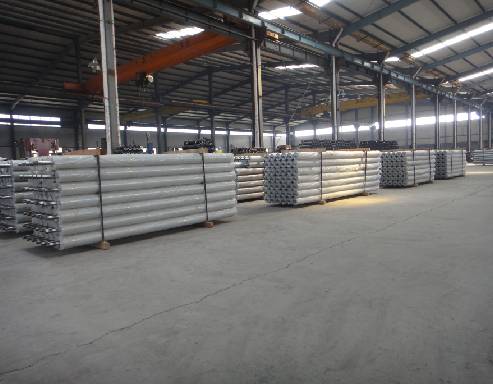 Afrikaans
Afrikaans  Albanian
Albanian  Amharic
Amharic  Arabic
Arabic  Armenian
Armenian  Azerbaijani
Azerbaijani  Basque
Basque  Belarusian
Belarusian  Bengali
Bengali  Bosnian
Bosnian  Bulgarian
Bulgarian  Catalan
Catalan  Cebuano
Cebuano  Corsican
Corsican  Croatian
Croatian  Czech
Czech  Danish
Danish  Dutch
Dutch  English
English  Esperanto
Esperanto  Estonian
Estonian  Finnish
Finnish  French
French  Frisian
Frisian  Galician
Galician  Georgian
Georgian  German
German  Greek
Greek  Gujarati
Gujarati  Haitian Creole
Haitian Creole  hausa
hausa  hawaiian
hawaiian  Hebrew
Hebrew  Hindi
Hindi  Miao
Miao  Hungarian
Hungarian  Icelandic
Icelandic  igbo
igbo  Indonesian
Indonesian  irish
irish  Italian
Italian  Japanese
Japanese  Javanese
Javanese  Kannada
Kannada  kazakh
kazakh  Khmer
Khmer  Rwandese
Rwandese  Korean
Korean  Kurdish
Kurdish  Kyrgyz
Kyrgyz  Lao
Lao  Latin
Latin  Latvian
Latvian  Lithuanian
Lithuanian  Luxembourgish
Luxembourgish  Macedonian
Macedonian  Malgashi
Malgashi  Malay
Malay  Malayalam
Malayalam  Maltese
Maltese  Maori
Maori  Marathi
Marathi  Mongolian
Mongolian  Myanmar
Myanmar  Nepali
Nepali  Norwegian
Norwegian  Norwegian
Norwegian  Occitan
Occitan  Pashto
Pashto  Persian
Persian  Polish
Polish  Portuguese
Portuguese  Punjabi
Punjabi  Romanian
Romanian  Russian
Russian  Samoan
Samoan  Scottish Gaelic
Scottish Gaelic  Serbian
Serbian  Sesotho
Sesotho  Shona
Shona  Sindhi
Sindhi  Sinhala
Sinhala  Slovak
Slovak  Slovenian
Slovenian  Somali
Somali  Spanish
Spanish  Sundanese
Sundanese  Swahili
Swahili  Swedish
Swedish  Tagalog
Tagalog  Tajik
Tajik  Tamil
Tamil  Tatar
Tatar  Telugu
Telugu  Thai
Thai  Turkish
Turkish  Turkmen
Turkmen  Ukrainian
Ukrainian  Urdu
Urdu  Uighur
Uighur  Uzbek
Uzbek  Vietnamese
Vietnamese  Welsh
Welsh  Bantu
Bantu  Yiddish
Yiddish  Yoruba
Yoruba  Zulu
Zulu Exploring the Functionality and Importance of V-Belt Idler Pulleys in Mechanical Systems
Understanding V-Belt Idler Pulleys Functions and Importance
V-belt idler pulleys are crucial components in mechanical systems that utilize V-belts for power transmission. These pulleys play a significant role in enhancing the efficiency and longevity of the entire drive system. In this article, we will explore the functions, types, and benefits of V-belt idler pulleys, as well as their applications across various industries.
What is a V-Belt Idler Pulley?
A V-belt idler pulley is a non-driven pulley that is used in conjunction with a V-belt drive system. Unlike the driving pulleys, which are connected to a power source, idler pulleys do not transmit power. Instead, they help maintain the proper tension on the V-belt, ensuring optimal performance and reducing wear and tear. These pulleys are typically made of durable materials like steel or high-grade plastic to withstand the rigors of mechanical operation.
Functions of Idler Pulleys
1. Tension Maintenance One of the primary functions of an idler pulley is to maintain the tension of the V-belt. Proper tension is essential for preventing slippage, which can lead to decreased efficiency and increased energy consumption. An idler pulley helps keep the belt taut, ensuring that power is transmitted effectively from the driving to the driven components.
2. Belt Alignment Idler pulleys also assist in keeping the V-belt properly aligned with the other pulleys in the system. Misalignment can cause uneven wear on the belt and may lead to premature failure. By guiding the belt in a straight line, idler pulleys contribute to the overall health of the drive system.
3. Flexibility in Design In many mechanical systems, space constraints or design requirements necessitate a deviation from a straight line between pulleys. Idler pulleys offer flexibility in these designs, allowing for more complex arrangements without compromising belt efficiency.
Types of Idler Pulleys
There are various types of idler pulleys available, each designed for specific applications. Some popular types include
- Fixed Idler Pulleys These pulleys are stationary and maintain continuous tension on the belt.
- Adjustable Idler Pulleys These pulleys can be adjusted to change the tension on the V-belt, providing a customizable solution for different operational needs.
v belt idler pulley

- Tensioner Pulleys These are a type of adjustable idler pulley that automatically adjusts tension in response to belt wear or environmental conditions
.Benefits of Using V-Belt Idler Pulleys
1. Increased Efficiency By ensuring consistent tension and proper alignment, idler pulleys enhance the overall efficiency of the V-belt drive system. This leads to better power transmission and energy savings.
2. Extended Belt Life Properly functioning idler pulleys reduce wear on the V-belt and other components, contributing to a longer operational life for these parts.
3. Reduced Maintenance Costs A reliable idler pulley system can lead to fewer breakdowns and lower maintenance costs for industrial machinery, resulting in substantial savings over time.
Applications of V-Belt Idler Pulleys
V-belt idler pulleys have a wide array of applications in numerous industries, including
- Automotive In vehicles, idler pulleys are used in serpentine belt systems that drive engines' accessories, enhancing performance and reliability.
- Manufacturing Machinery in manufacturing plants often employs V-belt drives where idler pulleys maintain efficient power transmission.
- Agriculture Tractors and other farming equipment utilize idler pulleys to drive multiple attachments and increase operational versatility.
In conclusion, V-belt idler pulleys are an indispensable part of many mechanical systems, providing essential support for belt tension and alignment. Their importance cannot be overstated, as they contribute to the efficiency, durability, and reliability of various industrial applications. By understanding the functions and roles of these pulleys, businesses can make informed decisions about their mechanical systems and improve overall performance.
-
Revolutionizing Conveyor Reliability with Advanced Rubber Lagging PulleysNewsJul.22,2025
-
Powering Precision and Durability with Expert Manufacturers of Conveyor ComponentsNewsJul.22,2025
-
Optimizing Conveyor Systems with Advanced Conveyor AccessoriesNewsJul.22,2025
-
Maximize Conveyor Efficiency with Quality Conveyor Idler PulleysNewsJul.22,2025
-
Future-Proof Your Conveyor System with High-Performance Polyurethane RollerNewsJul.22,2025
-
Driving Efficiency Forward with Quality Idlers and RollersNewsJul.22,2025





























